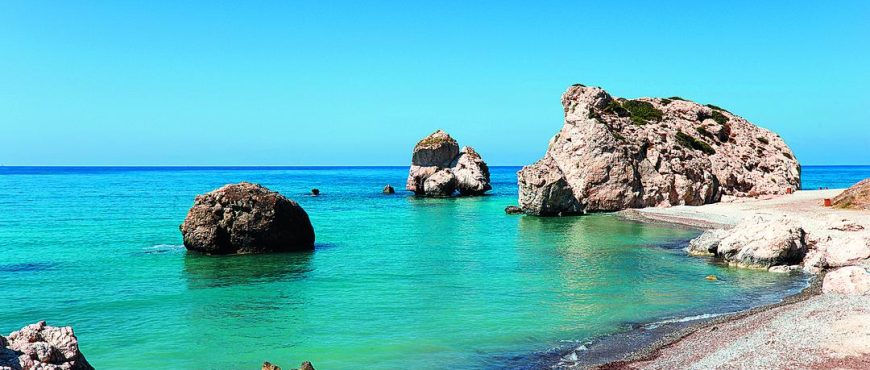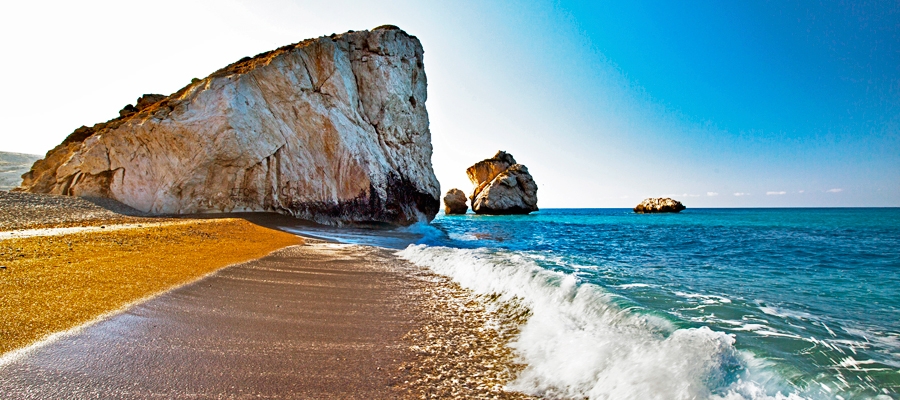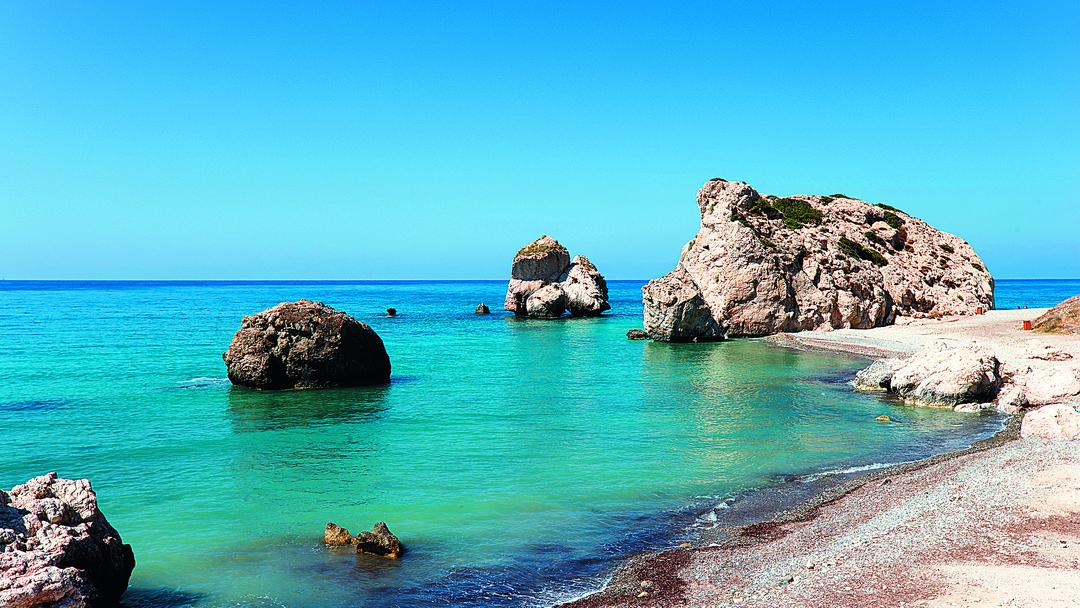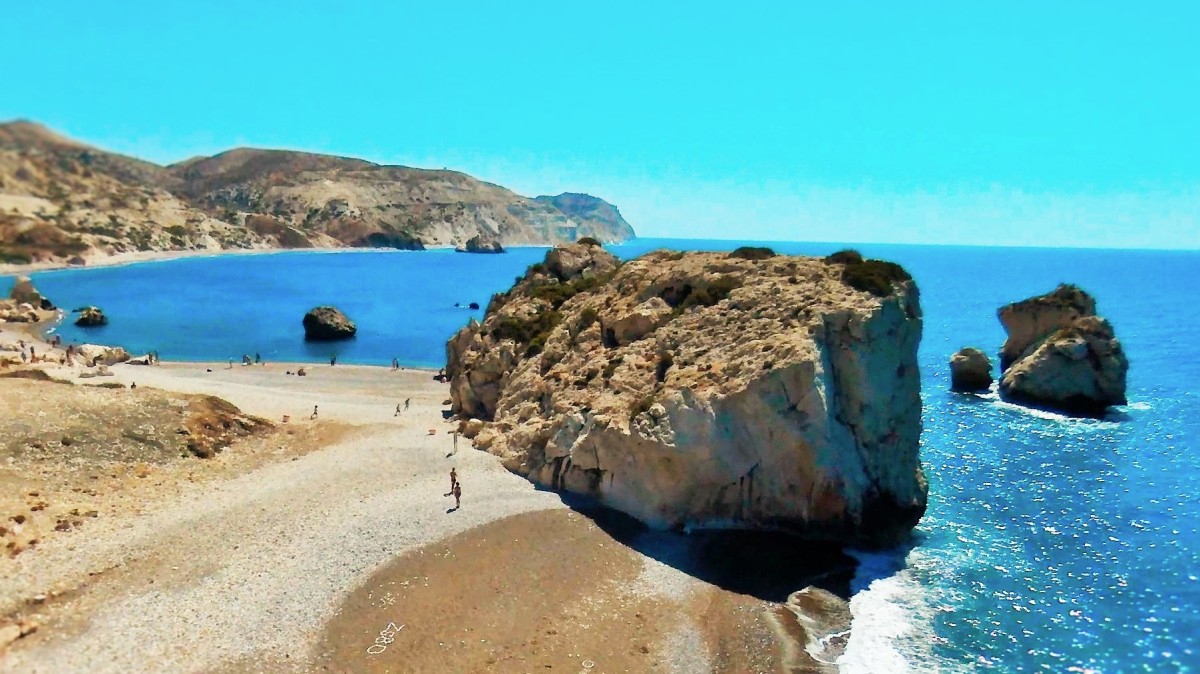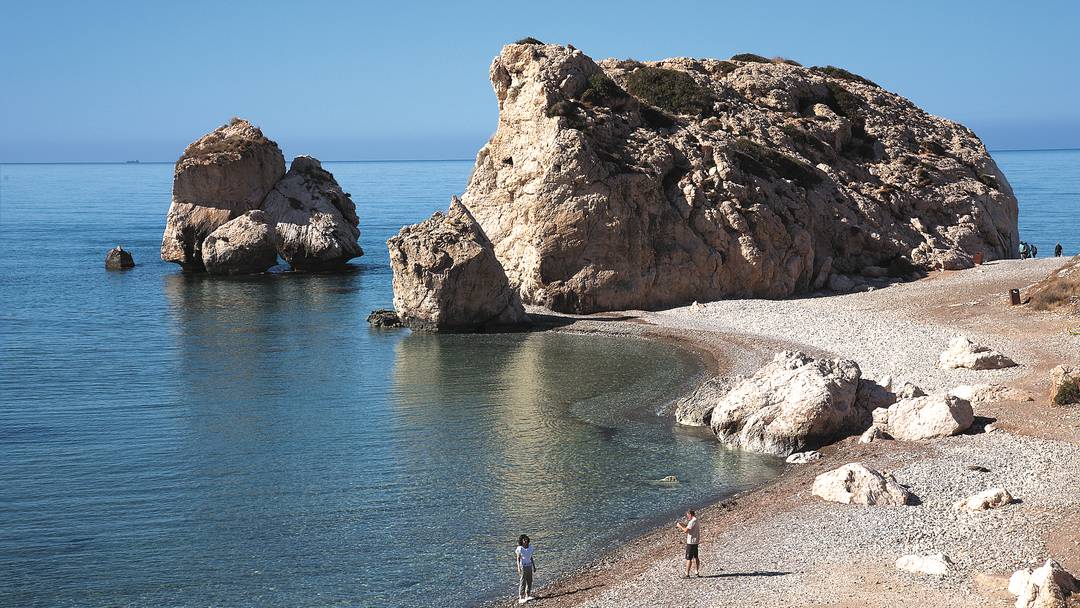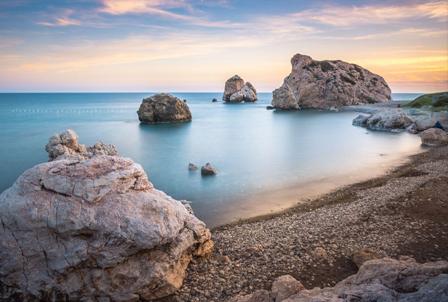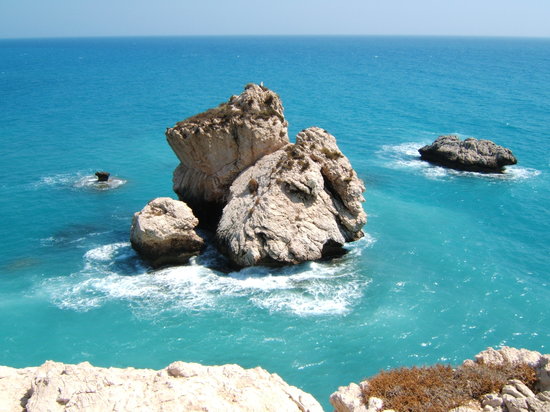Petra tou Romiou, a rock off the shore along the main road from Paphos to Limassol, has been regarded since ancient times as the birthplace of Aphrodite, goddess of love and fertility.
According to ancient tradition, Aphrodite was born from the waves on the site off the coast of Cyprus. In his Theogony (178-206), Hesiod provides the following dramatic account of the event:
Aphrodite was then escorted ashore on a shell by the soft breezes of the Zephyrs at the rocks known as Petra tou Romiou.
This myth is, of course, most memorably depicted in Botticelli‘s Birth of Venus (on display in the Uffizi Gallery in Florence). A much older rendering of the event can be seen in a fine mural at Pompeii.
Homer‘s account of Aphrodite’s birth is less dramatic. He said she was the daughter of Zeus and the fresh water nymph Dione, at whose bosom she would sometimes seek solace (Iliad 5.370-417).
Petra tou Romiou means “the Rock of the Greek” and does not refer to Aphrodite but to another myth, that of the Byzantine hero Digheniswho threw the rocks at pirates to protect his lady.
It is said that in certain weather conditions, the waves rise, break and form a column of water that dissolves into a pillar of foam. With imagination, this looks for just a moment like an ephemeral, evanescent human shape.
There is a long narrow pebbly beach at Petra tou Romiou that extends to either side of the largest rock and its satellites.

